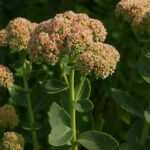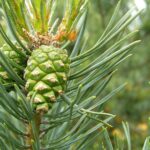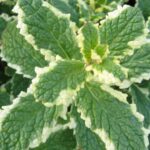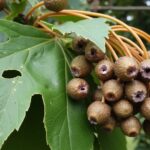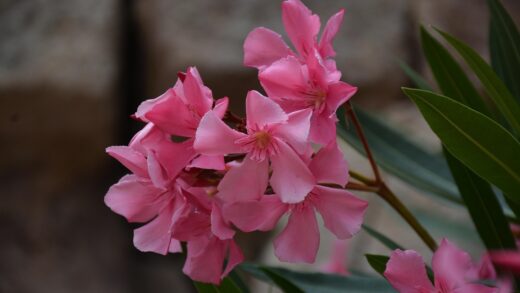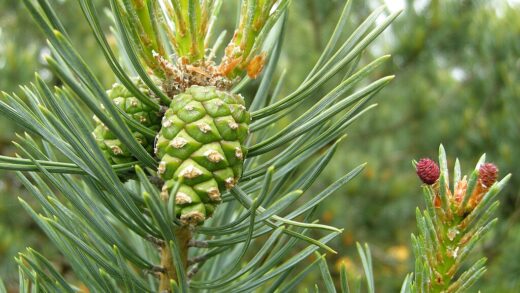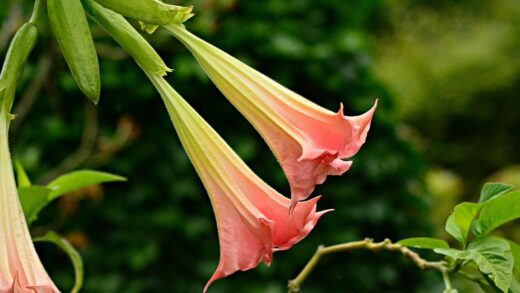While apple-scented mint is known for its vigor and general resilience, it is not entirely immune to the challenges posed by various diseases and pests. A vigilant gardener who knows what to look for can often spot a problem in its early stages, making it far easier to manage and resolve. The health of your mint is a direct reflection of its growing conditions; a plant that is stressed by improper watering, poor air circulation, or nutrient deficiencies will be significantly more vulnerable to attack. Therefore, the most effective pest and disease management strategy is always a proactive one, focused on creating a healthy, balanced environment where your mint can thrive and naturally fend off potential threats. Understanding the common culprits and their symptoms is the first step toward keeping your fragrant herb patch productive and beautiful.
Fungal diseases are among the most common afflictions of apple-scented mint, with rust and powdery mildew being the two primary offenders. These diseases thrive in specific environmental conditions, most notably high humidity, warm temperatures, and poor air circulation. The dense growth habit of a thriving mint patch can inadvertently create the perfect microclimate for these pathogens to take hold. Therefore, cultural practices that promote good airflow, such as proper spacing between plants and regular thinning or harvesting, are fundamental to prevention. Keeping the foliage as dry as possible is also a critical preventative measure.
When it comes to insect pests, several common garden dwellers may take a liking to your mint. Sap-sucking insects like aphids and spider mites are frequent visitors, feeding on the plant’s juices and potentially causing stippling, yellowing, and distorted growth on the leaves. While a healthy mint plant can often tolerate a minor infestation, large populations can weaken the plant and diminish its aesthetic and culinary value. Monitoring your plants regularly, especially the undersides of leaves and new growing tips where these pests often congregate, is key to catching an infestation before it gets out of hand.
Fortunately, managing these common issues does not necessarily require a turn to harsh chemical treatments, which should be a last resort for any edible herb. Integrated Pest Management (IPM) offers a more holistic and environmentally sensitive approach. This strategy emphasizes prevention, regular monitoring, and the use of the least toxic control methods first. This can include physical removal of pests, encouraging beneficial insects that prey on them, and using organic sprays like insecticidal soap or neem oil when an intervention is necessary. This approach protects not only your herb but also the broader garden ecosystem.
Ultimately, the best defense is a good offense. A strong, healthy plant is its own best protector. By providing your apple-scented mint with its preferred growing conditions – well-draining, moist soil, adequate sunlight with afternoon shade, and good air circulation – you build its natural resilience. A plant that is not struggling to survive has more resources to allocate to its own defense mechanisms, making it a much less appealing target for both opportunistic pests and pathogenic fungi. Your primary role as a gardener is to be a good steward of the plant’s environment.
Common fungal diseases
Mint rust, caused by the fungus Puccinia menthae, is one of the most specific and recognizable diseases to affect members of the mint family. The infection typically first appears as small, bright orange or brownish pustules on the undersides of the leaves and on the stems. As the disease progresses, these pustules may rupture, releasing powdery spores that can be spread by wind or splashing water to other parts of the plant or to neighboring mint plants. In severe cases, the leaves may turn yellow, become distorted, and drop prematurely, significantly weakening the plant.
Prevention is the most effective way to deal with mint rust. The fungus overwinters on infected plant debris, so a thorough cleanup of the mint patch in the autumn is crucial. Remove and destroy all old stems and fallen leaves to reduce the amount of fungal inoculum for the following season. Ensuring good air circulation by not overcrowding your plants is also vital. When you water, apply it directly to the soil to avoid wetting the leaves, as the rust spores require a film of moisture on the leaf surface to germinate and cause an infection.
If you discover mint rust on your plants, immediate action is required to prevent its spread. Prune off and destroy any infected stems and leaves immediately. Do not add this material to your compost pile, as the spores can survive and be reintroduced to your garden later. For widespread infections, it may be necessary to cut the entire plant back to the ground. The new growth that emerges from the roots will often be healthy, especially if you take steps to improve air circulation and watering practices.
Powdery mildew is another common fungal issue, presenting as a distinctive white, talcum-powder-like coating on the leaves, stems, and sometimes the flowers of the plant. Like rust, it thrives in warm, humid conditions with poor airflow. While it may not be as destructive as rust, it is unsightly and can interfere with photosynthesis, gradually weakening the plant. The variegated leaves of apple-scented mint can make the white patches a little harder to spot initially, so careful inspection is needed. Preventative measures, including proper spacing and avoiding overhead watering, are again the best line of defense.
Identifying and managing pests
Aphids are small, pear-shaped insects that can be found in a variety of colors, including green, black, and yellow. They typically cluster on the tender new growth and the undersides of leaves, using their piercing mouthparts to suck the nutrient-rich sap from the plant. A heavy infestation can cause the leaves to curl, yellow, and become stunted. Aphids also excrete a sticky substance called honeydew, which can lead to the growth of sooty mold and can attract ants, which often “farm” the aphids for their honeydew.
Managing aphids can often be accomplished with simple, non-chemical methods. A strong jet of water from a hose can be surprisingly effective at dislodging them from the plant. For smaller infestations, they can be wiped off by hand. Encouraging natural predators is a fantastic long-term solution; ladybugs, lacewings, and hoverflies are all voracious aphid predators. Planting a variety of flowering plants that attract these beneficial insects can help to keep aphid populations in check naturally. If a spray is needed, insecticidal soap is a safe and effective option that works by disrupting the insect’s outer shell.
Spider mites are another common sap-sucking pest, but they are technically arachnids, not insects. They are incredibly tiny and difficult to see with the naked eye, but their damage is more obvious. They cause a fine, yellowish stippling on the leaves as they feed. In more advanced infestations, you will see fine, silky webbing on the plant, particularly around the leaf axils and on the undersides of the leaves. Spider mites thrive in hot, dry conditions, so they can be a particular problem for indoor or greenhouse-grown plants.
Combating spider mites often involves altering their preferred environment. Misting the plants with water can raise the humidity, which these pests dislike. As with aphids, a strong spray of water can help to knock them off the plant. Horticultural oils and insecticidal soaps are also effective control measures, but they must be applied thoroughly, ensuring complete coverage of the undersides of the leaves where the mites congregate. Because they reproduce very quickly, repeat applications are often necessary to control the population.
Other potential insect problems
While aphids and spider mites are the most common culprits, other insects can occasionally bother apple-scented mint. Cutworms, for example, are the larvae of certain moths and can be frustrating pests in the spring. They live in the soil and emerge at night to feed, often chewing through the stems of young plants at ground level, effectively “cutting” them down. To protect young mint plants, you can place a physical barrier, such as a cardboard collar, around the base of the stem, pushed an inch or two into the soil.
Flea beetles are small, dark insects that get their name from their ability to jump like a flea when disturbed. They chew numerous small, round “shot holes” in the leaves of the plant. While this damage is mostly cosmetic on a mature, established mint plant, a heavy infestation can be detrimental to young seedlings. Floating row covers can be used to protect young plants from flea beetles early in the season. Once the mint is well-established and growing vigorously, it can usually outgrow the damage caused by these pests.
Less common, but still possible, are pests like thrips or whiteflies. Thrips are tiny, slender insects that scrape at the leaf surface and suck the leaking sap, leaving behind silvery or bleached-looking streaks and spots. Whiteflies are small, moth-like insects that, like aphids, suck sap and excrete honeydew. They tend to congregate on the undersides of leaves and will fly up in a cloud when the plant is disturbed. Both of these pests can be managed with the same strategies used for aphids and spider mites, such as insecticidal soap sprays and the encouragement of natural predators.
It is important to correctly identify the pest before taking any action. Different insects have different life cycles and habits, and a control method that works for one may not work for another. Take a close look at the pest itself and the type of damage it is causing. A magnifying glass can be a useful tool for this. Once you have a positive identification, you can choose the most appropriate and least-toxic management strategy, ensuring the continued health of your mint and the safety of your harvest.
Prevention as the best cure
The most effective and sustainable approach to managing pests and diseases on your apple-scented mint is to focus on prevention. This begins with creating a healthy growing environment that minimizes stress on the plant. A stressed plant is like a person with a weakened immune system – it is far more likely to succumb to infections and infestations. Ensuring your mint has the right amount of sunlight, consistent moisture in well-draining soil, and adequate nutrition forms the foundation of its health.
Good garden hygiene is a critical component of disease prevention. Fungal spores, such as those that cause rust, can overwinter on dead plant material. At the end of the growing season, be sure to cut back your mint and clean up all the fallen leaves and debris from around the base of the plant. Dispose of this material rather than composting it, especially if you have had any disease issues during the season. This simple act can dramatically reduce the amount of disease pressure your plants will face the following spring.
Promoting good air circulation is perhaps the single most important factor in preventing fungal diseases like rust and powdery mildew. This can be achieved in several ways. When planting, give your mint plenty of space and avoid crowding it with other plants. As the plant grows, regular harvesting or thinning can help to open up the center of the clump, allowing air to move freely through the foliage. This helps the leaves to dry more quickly after rain or morning dew, denying fungal spores the moisture they need to germinate.
Finally, fostering biodiversity in your garden is a powerful, long-term preventative strategy. By planting a wide variety of plants, especially those that provide nectar and pollen for beneficial insects, you can create a resilient ecosystem. This attracts predators like ladybugs, lacewings, and predatory wasps that will help to keep pest populations naturally in check. A diverse garden is a balanced garden, and in this balance, your apple-scented mint is much more likely to thrive without the need for constant intervention.



